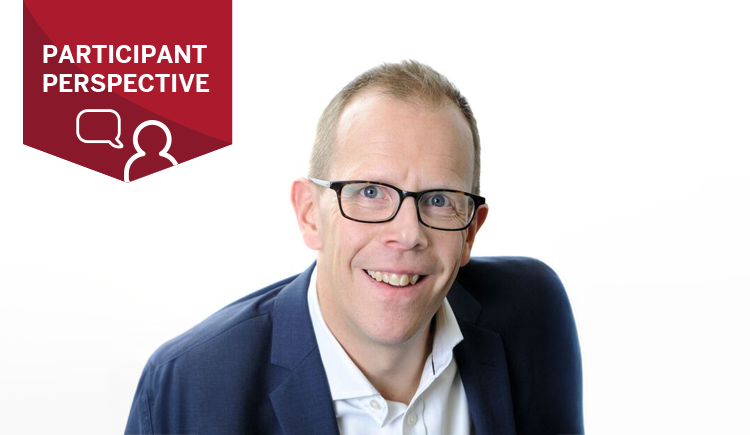
Information regarding COVID-19 has rapidly evolved. The content in this article provides a historical snapshot of events surrounding the date of posting.
What’s the best way to implement a successful COVID-19 vaccination program?
This question was recently posed to a multi-disciplinary group of Harvard Medical School master’s level students as part of a course called Leadership and Teamwork. The students came together in an online format, representing different sectors, different countries, and different time zones to brainstorm an answer. But one thing that united them all was a desire to strengthen their skills to become more effective leaders and team members.
Training Multi-Disciplinary Teams
The Leadership and Teamwork course brings together students from three Harvard Medical School postgraduate programs, Master of Medical Sciences in Clinical Investigation (MMSCI), Master of Healthcare Quality and Safety (MHQS), and Master in Clinical Service Operations (MCSO). Combining all of these program areas in one course provides participants with a unique chance to share their expertise and to build on an array of strengths, explains Ajay Singh, MBBS, FRCP, MBA, who is the course director of the Leadership and Teamwork course. He is also the program director for the MMSCI program.
“We posed the vaccine question because we wanted the students to learn how to create a multi-faceted plan to distribute the vaccine and to communicate what steps needed to happen in order to move the plan from the mission to its actual implementation the way they would in the real world,” Singh says.
Three Questions to Cover
In order to facilitate the planning required to respond to the vaccine challenge, the teams were given the following three more specific questions that they also had to answer in a comprehensive group presentation:
- What should the global strategy for vaccine implementation be?
- How do we overcome vaccine hesitancy?
- What are the vaccination goals?
To answer these questions, the participants used the leadership principles they had learned in the coursework and in the lectures. They also used a case study about the measles vaccine, which illustrated some key principles they could apply to their own efforts. The students were asked to think about both strategy and tactics, emphasizing that both having a plan, and understanding how to implement it, are important.
“The key to this project is that planning is an important part of the work. We wanted the participants to realize that having an idea isn’t enough; they also need to think through how they would put their idea into action and how they would delegate the work,” Singh says.
He points out that while it’s common to work closely with people in their own field when tackling a project, faculty also wanted to show that “by partnering with people in other areas of health care, they can actually achieve much better results or better outcomes.”
Presenting the Project Results
To accomplish this goal, Singh explains that students from the three different programs were randomly mixed together to work on this project.
“We had eight groups of about six students in each,” he points out. Each group met several times over the course of a week and then did a 10-minute presentation to share their findings.
Anjala Tess, MD, program director for MHQS, had a chance to evaluate all the student group presentations. “All of the groups did a really phenomenal job,” Tess stresses. “All of the presentations were very detailed, very creative; and they used a lot of exemplary presentation skills including graphics and multi-media videos. It is clear they did work together and built off each other’s skills and strengths.”
Following One Student’s Progress
Hirotada Kobayashi, MD, an ICU physician originally from Japan who is currently living in the Boston area, was part of one of the multi-disciplinary student teams. As a student enrolled in the MMSCI track, he found working as part of a broader team on the COVID-19 vaccine project provided him important skills he will be able to apply on the job.
“The students in my group, which included doctors, pharmacists, and people working in administration and health care policy, were scattered all over the world due to COVID-19,” he says, pointing out that this required some coordination to allow them to work together effectively.
From the very first meeting, Kobayashi’s group engaged in a thorough planning process, which set the pace and provided structure for their interactions.
“We also set an agenda for each meeting, which allowed us to run things efficiently,” he says. "All members of our team also respected each other and helped to improve the broader group’s work materials, rather than only focusing on the parts that they were responsible for working on."
During the initial meeting, Kobayashi says that one of the students exhibited strong leadership skills and took the lead in coordinating the schedule and the work. “Her warmth kept the whole team in a good mood. As a result, she naturally became the leader of the group,” he says.
The group used Slack to update each other’s information and slides, and to work out the details of the project seamlessly across time zones.
“Since there was only a limited amount of time when we all were able to meet together and actually talk directly to each other, I learned how important it is to focus on how to identify and solve problems,” he stresses. “I was also reminded how respecting your teammates and what they say is necessary for effective communication,” he adds.
Adapting Lessons Learned in the Real World
Kobayashi finds that the experience has provided him with an important foundation he can build on in the future.
“Overall, the best thing I took away from this experience was how valuable it is to work as an equal team with people with different backgrounds, knowledge, and strengths,” he says. “By using your own expertise, you can understand things deeply, but at the same time, it narrows your perspective. By adding people with other expertise to the mix, we can broaden our horizons while deepening our understanding,” he says.
“When I return to my own profession, I would like to actively solicit opinions from other experts in different fields,” he says. “Overall I have learned a lot about leadership in depth. In particular, I learned how to lead in a crisis situation and how to resolve conflicts, which will be very useful when I move into a leadership position in the future,” he adds.
Teaching Scholars to Work across Disciplines
Singh points out that Kobayashi’s experience in the course shows what is possible when diverse groups come together around a common mission. “The ultimate goal of this class exercise is to teach scholars to work across disciplines and sectors in order to solve real world problems they will face on the job.” He adds that when the participants graduate from their Harvard Medical School programs, they will have a strong foundation to build on that can help them bring about important change in their home countries, or respond to pressing problems their organizations or communities face, in the most effective way.
Written by Lisa D. Ellis


